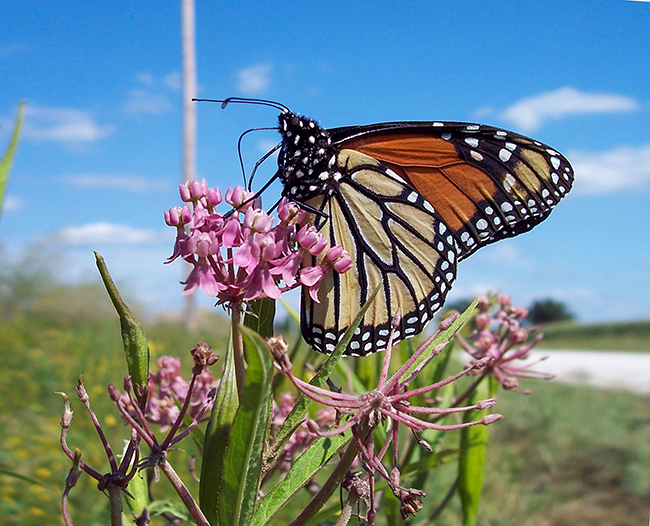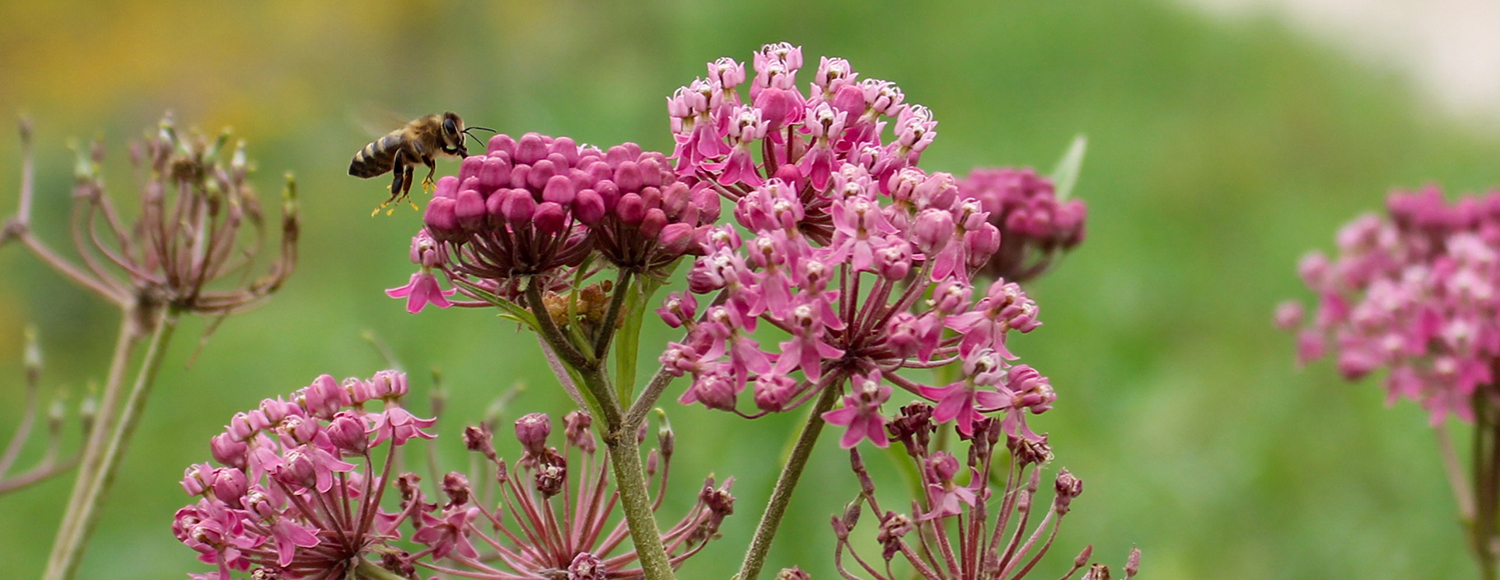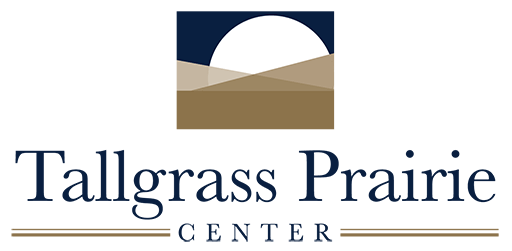Chapter 11: Managing for Pollinators
Table of Contents
The Value of Roadsides as Pollinator Habitat

Iowa county and city governments typically want to establish native roadside vegetation to save money on mowing and reduce erosion, weeds, and brush. However, since the 2010s, when news of declining pollinator populations worldwide became widespread, many conservationists and members of the public have become interested in the additional value of native roadside vegetation as a habitat for bees and butterflies.
Rights-of-way have potential as prime habitat for pollinators because they serve as travel corridors between other pollinator habitats and are in sunny locations in which many bees and butterflies prefer to forage. Some people are naturally concerned that encouraging bees and butterflies to forage in roadside habitat will result in many of these pollinators being killed by vehicle collisions. However, several studies have indicated that the pollinators using roadsides far exceed the numbers killed on roads and that there is a net benefit to providing habitat, especially in landscapes with very little native vegetation. High-quality habitats may reduce the number of times bees and butterflies need to cross the road in search of nectar plants or nesting habitats, reducing collision mortality.

Roadsides also represent a large amount of public land in the United States that could be revegetated with native plants to provide pollinator habitat. This is especially true in Iowa, where road rights-of-way comprise 60% of public land. The viability of monarch butterfly habitat in Iowa is of national importance to conservation efforts because it is one of the few states entirely within the eastern monarch flyway, a major migration route for monarch butterflies between Canada and Mexico.
In 2015, the White House released the National Strategy to Promote the Health of Honey Bees and Other Pollinators, which included a directive to increase roadside pollinator habitat. Later that year, the Fixing America’s Surface Transportation Act (FAST Act) included a provision encouraging pollinator habitat along roadsides. These federal actions have resulted in more efforts to restore habitat for pollinators at the state and local levels. For example, the Iowa Monarch Conservation Consortium’s Conservation Strategy for the Eastern Monarch Butterfly (Danaus plexippus), approved in 2018, identified rights-of-way as a priority area in which monarch habitat planting and preservation efforts should be focused within Iowa. The consortium encouraged the planting of milkweed for monarch caterpillars and nectar plants for adult monarchs in order to increase monarch populations.



